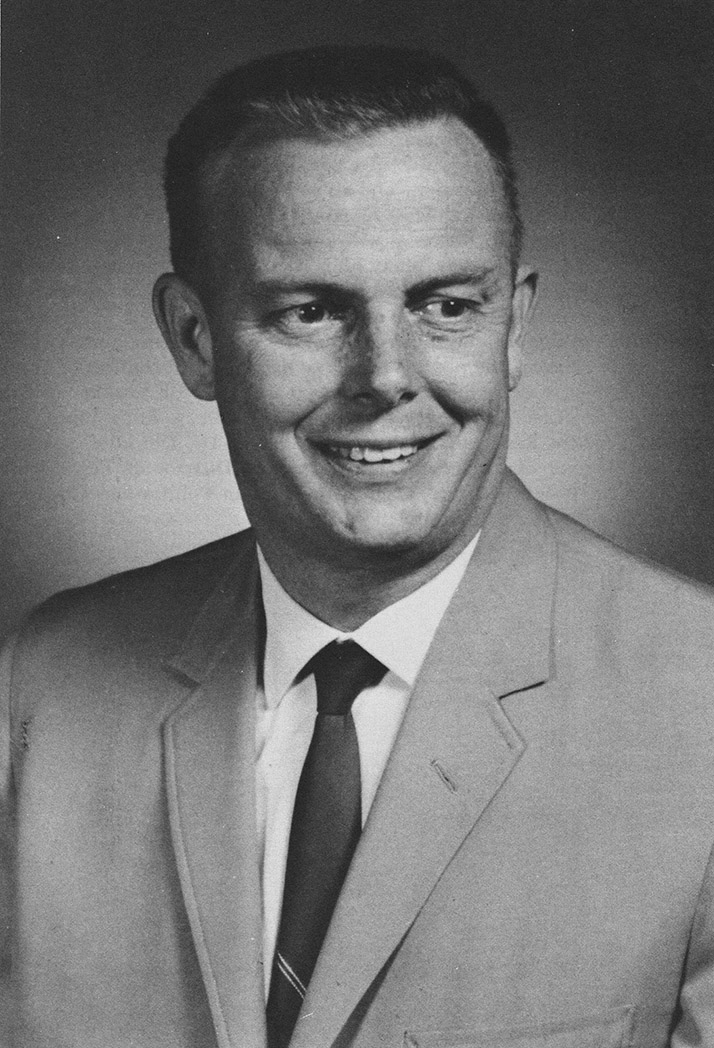History
Below is a summary describing the development and growth of the NSRL. For a more thorough history and overview, see the NSRL’s 50th Anniversary Report, as well as an illustrated timeline highlighting significant events and achievements. For brief biographies of former NSRL curators and collection managers, see our list of former NSRL personnel.
 In 1962, Dr. Robert L. Packard was hired as the first mammalogist in the Department
of Biological Sciences at Texas Tech University. Upon his hiring, Packard established
the Mammal Collection at
In 1962, Dr. Robert L. Packard was hired as the first mammalogist in the Department
of Biological Sciences at Texas Tech University. Upon his hiring, Packard established
the Mammal Collection at TTU with an initial deposit of approximately 350 specimens. Although originally housed
in Biological Sciences, the collection was later moved to the basement of the Museum
of Texas Tech University. In the early 1970's, the Natural Science Research Laboratory
(NSRL) was conceived out of the need to establish appropriate facilities to house
the growing natural history collections. The NSRL addition to the Museum was completed
in 1973.
TTU with an initial deposit of approximately 350 specimens. Although originally housed
in Biological Sciences, the collection was later moved to the basement of the Museum
of Texas Tech University. In the early 1970's, the Natural Science Research Laboratory
(NSRL) was conceived out of the need to establish appropriate facilities to house
the growing natural history collections. The NSRL addition to the Museum was completed
in 1973.
The collections housed in the NSRL initially included not only mammals, but also birds, reptiles, amphibians, fishes, invertebrates, and the paleontology collection. In 1996, the Paleontology Collection received autonomy and became a separate division under the Museum umbrella, and the paleontological specimens were moved to the basement of the Museum.
Although the early natural history collections of the NSRL were diverse, representing most phyla of the animal kingdom, the primary research focus of the NSRL largely has been mammals. This reflected the collections-based mammalogical research focus of the faculty of the Department of Biological Sciences that were associated with the NSRL from the 1970s to present day (including Drs. Robert J. Baker, Robert D. Bradley, Dilford Carter, Ron Chesser, Clyde Jones, J. Knox Jones, Robert Owen, Caleb D. Phillips, and Michael Willig). By the 1990s, this emphasis had left the reptile, amphibian, and fish collections underutilized at Texas Tech University. Similarly, the mammal and bird collections of the Texas Memorial Museum (TMM) of the University of Texas at Austin were underutilized due to that museum's strong focus on herpetological research. To make more effective use of these resources and to make specimens more readily available to scientists and students, Ed C. Theriot, Director of the TMM, initiated negotiations with Robert J. Baker and Gary F. Edson, Director of the Museum of Texas Tech University, to exchange the NSRL's reptile, amphibian, and fish collections with the TMM's bird and mammal collections. This exchange occurred in 2001. The collection acquired by the NSRL consisted of nearly 7,000 mammals, 1,700 birds, 800 clutches of eggs, and nearly 300 taxidermy mounts. Although the trade reduced the overall vertebrate diversity of the NSRL collection, this realignment of specimens with faculty strengths not only benefited both universities and improved the care of both collections, but it also served to strengthen the biodiversity programs that provide critical natural history information to society.
The growth of the NSRL collections necessitated a complete remodeling of the NSRL building in 1997-1998. During those renovations, which were supported by a National Science Foundation grant, collection areas, office areas, and preparation areas were isolated from each other to maximize safety and efficiency and to minimize potential contamination problems. A new room, equipped to house up to 11 ultra-cold freezers, was designated for the frozen tissues collection.

In 2015, upon the retirement of Dr. Robert J. Baker as Director of the NSRL, Curator of Mammals, and Curator of Genetic Resources, Dr. Robert D. Bradley was named as Director of the NSRL and Dr. Caleb D. Phillips as the Curator of the GRC. Also in 2015, the NSRL was awarded a major grant from NSF to convert the GRC storage system from mechanical -80°C freezers to a liquid-nitrogen based storage system, and the University provided funding for renovations of the GRC facility (now known as the Robert J. Baker Genetic Resources Collection) in support of that project (see more about the liquid nitrogen project here). In addition, the NSRL received financial support from The CH Foundation to install donated compactors (mechanical storage units) in the Fluid Collection and the Packard Library of the NSRL. These compactors greatly increased the efficiency and overall storage capacity of these two collections.
 In 2023, the NSRL celebrated its 50th anniversary. The occasion was marked by a celebratory
event at the Museum; the publication of an extensive 50-year report about the NSRL's contributions to research, education, scholarship, collections growth
and management, and engagement; and the development of an illustrated timeline summarizing the history of the NSRL.
In 2023, the NSRL celebrated its 50th anniversary. The occasion was marked by a celebratory
event at the Museum; the publication of an extensive 50-year report about the NSRL's contributions to research, education, scholarship, collections growth
and management, and engagement; and the development of an illustrated timeline summarizing the history of the NSRL.
In 2025, following the retirement of Dr. Robert D. Bradley, Dr. Richard D. Stevens was named Interim Director and Dr. Caleb D. Phillips was named Interim Assistant Director of the NSRL.
Natural Science Research Laboratory
-
Address
Museum of Texas Tech University, 3301 4th street, Lubbock, TX 79409 -
Phone
806.742.2486 -
Email
nsrl.museum@ttu.edu
